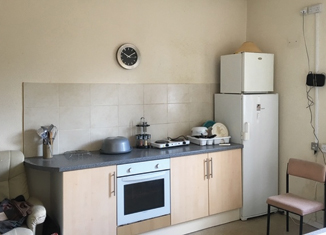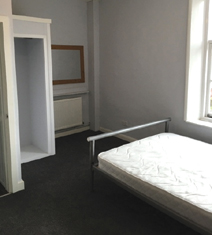Property Investor News recently interviewed our Karl Griggs for an article about how landlords should approach obtaining finance and investing in property in today’s climate. They also interviewed one of our investors, Rob Bridgewater, who talked about his own portfolio and gave advice to other investors considering undertaking HMOs.
Financing Deals – Be Professional and Build a Solid Track Record
Is obtaining finance getting easier or harder? Peter Hemple reports in Property Investor News
Research released in March showed that landlords with bigger portfolios have swung dramatically to using limited company status for new purchases, highlighting the ongoing switch in the BTL market as landlords reshape their portfolios.
The research conducted online in December 2018 among a sample of almost 500 landlords that are members of the National Landlords Association (NLA), found that nearly two out of three (64%) of landlords with more than four properties who plan to buy this year will use limited company status. Across the market as a whole 44% of all landlords planning to buy will use limited company status but that drops to 17% among landlords with one to three properties.
More than six out of 10 landlords planning to fund new purchases this year will still use a traditional BTL mortgage, regardless of whether an individual or a company. However, the study found 73% believe lending criteria and portfolio application process changes introduced by the Prudential Regulation Authority (PRA) are making it more difficult to secure mortgages while 57% say the changes will slow applications down.
Limited company status is growing in popularity as the phased reduction in mortgage interest tax relief does not affect limited company landlords who can continue to offset mortgage interest against profits – which are subject to Corporation Tax of 19% instead of income tax rates. The interest coverage ratio on limited company applications is also lower than for most individual landlord applications.
Alan Cleary, managing director at Precise Mortgages, says: “The buy-to-let market is changing and the switch to greater use of limited company status is one aspect of the development underlining the increasing maturity of the sector. There are good reasons why limited company buy-to-let is dominating the purchase market and we expect that will continue to be the case this year and next. Brokers and customers however need expert specialist support when buying as a limited company or considering switching to limited company status as there are considerable costs involved.”
Splitting the portfolio up
I ask Alan why there has been such a big move towards buying as a limited company. He replies: “The reason converting to a limited company is so popular is because of the tax changes from the autumn 2015 Budget. Landlords can charge less tax relief so it has become more expensive to own a rental property, especially if you are a higher rate tax payer. Also, if your properties are located further south, the rental yields are likely to be lower so the tax change is more likely to affect you.”
 Alan says that the lending market has changed a lot since that Budget announcement. “Three years ago, limited company BTL products didn’t exist and we launched in January 2016. The reason landlords with larger portfolios are buying properties through a limited company is because the tax change very easily pushes them into being a higher rate tax payer, assuming they weren’t already.”
Alan says that the lending market has changed a lot since that Budget announcement. “Three years ago, limited company BTL products didn’t exist and we launched in January 2016. The reason landlords with larger portfolios are buying properties through a limited company is because the tax change very easily pushes them into being a higher rate tax payer, assuming they weren’t already.”
I ask Alan if there is a number of properties or a level of rental income that makes it worth converting to a limited company, but he responds, “it is very individual so you need to get some tax advise because not everyone is better off as a limited company.”
He adds: “What we are seeing is more amateur landlords are leaving the rental market, especially those with just one property, whereas the professional landlords are more likely to take expert advice and plan accordingly. Of course those increased tax changes are only just coming in this year, starting in January 2019, so more amateur landlords could leave the market this year than they did last year.”
Are landlords converting entire portfolios into a limited company or just putting new purchases into a limited company? “They are splitting the portfolio up and putting just the new purchases into a limited company because if they move the existing BTL properties into a company, not only will they have to pay capital gains tax when the equity gains are realised, but the stamp duty needs to be paid again as it is a completely new purchase.”
Alan says that if the survey in December is a true indication then it is likely that the percentage of landlords buying through a limited company will continue to rise this year and next. But he adds that it is not just the mortgage tax relief that is pushing landlords into setting up a company. “The PRA changes were introduced on the 30th of September 2017 and stated that landlords with four or more mortgaged BTL properties would be classed as portfolio landlords and that lenders must apply additional tests for these landlords including looking at the whole portfolio when applying the affordability calculator, which includes the interest coverage ratio and interest rate stress tests.”
Summary of the PRA changes
Most buy-to-let lenders are regulated by the Bank of England’s Prudential Regulation Authority (PRA), which started insisting at the start of 2017 that when making a loan, the rent must cover at least 145% of the mortgage payment when the interest rate is at least 5.5%.
For example, if you buy a £100,000 property with a mortgage of £75,000, the monthly interest payment at 5.5% (the interest rate stress test) will be £343.75 and if you add the new interest coverage ratio of 145% then you multiply that amount by 1.45 to make £498.44. This basically means that for every £15,000 that you borrow under the new rules, you will need to be earning £100 per month in rent.
 However, the 145% requirement isn’t set in stone and the PRA has just said that the minimum should be 125%, but lenders should also take into account the borrower’s future tax liabilities. This means that in practice, most lenders are applying a level of 145% – but some will stick with 125% or split the difference at 135%. But crucially, these new rules don’t apply to mortgages for limited companies.
However, the 145% requirement isn’t set in stone and the PRA has just said that the minimum should be 125%, but lenders should also take into account the borrower’s future tax liabilities. This means that in practice, most lenders are applying a level of 145% – but some will stick with 125% or split the difference at 135%. But crucially, these new rules don’t apply to mortgages for limited companies.
Is that why there has been a shift among landlords to invest more in the north of England? “Yes. London and the surrounding areas that have high value properties with low yields have been most impacted. We predicted that this shift would happen a long time ago.”
However, Alan says that not all property investors have headed to the north of England. He concludes: “Some have stayed in the south and focused on how they can improve rental yields. That can be done either through creating an HMO or by taking out a light refurbishment BTL product, which is very popular at the moment. With that product you buy the property and do the work and then let it at a higher rent. There is no need to apply for a remortgage because in one application you get two loans. First you get the short term bridging loan to do the works and then it switches to the long term BTL loan once the works are completed. You can use this kind of financing to buy rundown properties at auction also.”
Landlords need to understand that the market has changed
CPC Finance is a UK brokerage that sources and packages a range of property-based funding, including buy-to-let, commercial, auction finance, property development and secured loans. As packaging specialists, the company processes mortgage applications from the start, through to completion.
I ask CPC managing director, Karl Griggs, what the main challenges are for landlords looking to raise finance at the moment and whether it is getting easier or harder. “It is not getting harder”, says Karl, adding: “The products are still out there but landlords need to understand that the market has changed and they need to be more professional now. Generally, if a landlord has up to 10 properties then it is less difficult to get finance but if they have over 10 properties then it is usually harder.
“The PRA changes have really affected the affordability calculations. For a standard buy to let mortgage, you have to put in more cash on day one. It is not a case of putting down a 25% deposit anymore. It is more likely that you will have to put 35-40% down. That is why the larger, more serious property investors have moved into the HMO (House in Multiple Occupation) market because the rental cover is much higher, which means that you can borrow at 80-85% LTV.”
Are you seeing this growth in HMO landlords in particular areas or is it nationwide? “In all areas, from Scotland down, landlords are looking at HMOs now. But these HMOs still need to be in the right locations to work – near to universities or hospitals and with good transport links.”
What about the LHA market for HMOs? “A lot of our customers don’t go down that route,” replies Karl. “They prefer to rent rooms to professionals mainly, or students.”
For property investors that want to move into developing property to resell, Karl says: “Building a track record is very important. To get started is difficult but the best way is to try a joint venture or two first to give you a track record of successfully redeveloping and selling property.
 Karl says that the biggest change that has occurred since the PRA rules were announced is not the move by landlords to setting up limited companies but the move away from standard BTL properties to HMOs. However, he adds: “I think the remortgage side of the landlord market will slow down soon because many of the landlords that have entered the HMO sector in recent years have taken out five-year fixed rates. So, two or three years from now some of them will have problems remortgaging as the interest rate on the loan will probably be higher, which will have a negative effect on the rental cover.”
Karl says that the biggest change that has occurred since the PRA rules were announced is not the move by landlords to setting up limited companies but the move away from standard BTL properties to HMOs. However, he adds: “I think the remortgage side of the landlord market will slow down soon because many of the landlords that have entered the HMO sector in recent years have taken out five-year fixed rates. So, two or three years from now some of them will have problems remortgaging as the interest rate on the loan will probably be higher, which will have a negative effect on the rental cover.”
What are your thoughts on the Bank of England base rate going forward and what are your concerns about Brexit? “Well, the interest rates will only go one way from here! Also, in my opinion, the most important thing about Brexit is that the valuers are watching it closely. So, if and when the UK finally leaves the EU, if the valuers consider it a ‘bad’ Brexit then they will adjust their valuations accordingly.”
Karl concludes: “I think the biggest question for landlords at the moment is whether to take money out of a deal and buy more property or to wait and see if prices come down.”
 Not everyone can manage an HMO – you have to know the sector
Not everyone can manage an HMO – you have to know the sector
Rob Bridgewater is a landlord and director at Armchair Property Investment, which is a partnership with another property investor, and he has a portfolio of single lets and HMOs in and around Holbeach in Lincolnshire. Regarding the difference between the two, Rob says: “We have been doing HMOs for three or four years now but still buy single let properties if the numbers work. The rental yields where we invest are a lot higher than the UK average and we aim for an 8-10% yield for single lets and 15-17% for HMOs. There is a lot of rental demand in the area because there are a lot of factories plus seasonal workers come here to work as fruit pickers etc.”
While Rob says that he has seen a slight drop off in the number of seasonal workers that are nearly always from the EU, because of concerns over Brexit, he is not too concerned because the factories in the area are still expanding and hiring more workers. He also does not need to keep an eye on which local councils near to him may or may not bring in selective licensing, saying: “We licence all of our HMOs now regardless of whether we have to or not. We typically convert a large house into a five or six-bed HMO. We still buy a lot through estate agents and I have only bought one or two at auction. We tend to borrow short term finance in the form of a bridging loan. The timeline for this depends on the amount of work needed but it is often up to one year. We then do all of the work required and switch over to long term finance.
 “With the long term finance, we both take fixed rates and variable rates to find a good balance. You can still get interest only loans, which help with cashflow and we put everything through a company. We did that several years ago before we even knew about the change to mortgage interest tax relief.”
“With the long term finance, we both take fixed rates and variable rates to find a good balance. You can still get interest only loans, which help with cashflow and we put everything through a company. We did that several years ago before we even knew about the change to mortgage interest tax relief.”
Are you still planning to keep buying HMOs this year? “We have slowed down on the quantity of deals and we are not buying five or six per year anymore. We are focusing on doing bigger deals at the moment, so right now we are converting an apartment block into 15 one-bed and two-bed flats, which we will rent to young professionals.”
Rob, who regularly obtains finance through CPC, says that typical interest rates for long term finance are around 5.5% but with rental yields of around 15% there is plenty of ‘wriggle room’. He adds: “Many of the HMOs have a high turnover of people. Some might only stay for one or two months then the room might need to be repainted etc. But at least you still have income coming in from the other rooms to cover your finance costs, unlike with a single let. My business partner has a lettings company, which is great because managing an HMO is very labour intensive. But not all lettings companies can manage an HMO – you have to know the sector.
Rob concludes: “We now source properties also for other property investors so we can pass on what we have learned over the years.”
